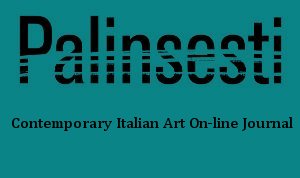“Palinsesti”. Contemporary Italian Art On-line Journal
 The Editors invite submission of an abstract of 500 words to: cfp@palinsesti.net
The Editors invite submission of an abstract of 500 words to: cfp@palinsesti.net
Deadline 31th September 2010. First issue will be published in Winter 2011.
Palinsesti is a peer-reviewed publication dedicated to historical studies concerning Italian Art since 1960. The editors invite contributors to submit articles for its first thematic issue: “A new methodology for the Sixties?” Did the art of the Sixties effectively introduce innovations to such a point that suggests the need to revise and adapt historical methodology according to these new objects of study (the artworks)? Is it still possible to study and analyse these artworks as a corpus comparable to the past artworks?
The issue will be focused on four main points (see below):
1. Documents: Artistic experimentation and the introduction of new media has changed the nature of the documents available for the historians (photographs of display, documentary videos, press reviews, etc…) How is it still possible to examine such documents philologically?
2. Geographic context: The notion of “milieu” or geographic-cultural context is deeply subjected to a revision as evidenced by widespread theories of globalization or the current fondness for reticular cultural models (as in Pierre Lévy, for example). Does the traditional partitioning of artists by local or national contexts, or the “dialectic” between center and periphery, outlined by Carlo Ginzburg and Enrico Castelnuovo, preserve its validity in the history of contemporary art?
3. Visual resources: Recent theories, like Gottfried Boehm’s Iconic Turn or Horst Bredekamp’s retrieval of Bildwissenschaft, suggest a fruitful opening of the field of Art History to the whole of visual phenomena and mass-media. What results could such the interjection of such comparisons yield, for the interpretation and the criticism of visual culture?
4. Visual theory: Arthur C. Danto’s writings pointed out how, without the attribution of an interpretative and theoretical value, artworks made since the Sixties have become indiscernible from other visual experiences not traditionally considered aesthetic (his notable example is Andy Warhol’s Brillo boxes). Therefore, is it possible to study contemporary Italian artworks without considering their contemporaneous theorical interpretations? For example, in terms of Formalism or “Pure Visibility”?
Editors
Paolo Campiglio (Università di Pavia, Italy)
Alessandro Del Puppo (Università di Udine, Italy)
Laura Iamurri (Università di Roma Tre, Italy)
Elizabeth Mangini (California College of the Arts, San Francisco, USA)
Marina Pugliese (Museo del Novecento, Milano, Italy)
Elena Volpato (Galleria d’Arte Moderna, Torino, Italy)
Denis Viva (Università di Udine, Italia; Editory Advisor)
The second issue (Autumn 2011) will be dedicated to: “Visual Identity of the Italians: from Renato Guttuso to Maurizio Cattelan”. Did the artworks of the last forty years preserve their possibility and capacity to narrate the historical, anthropological and social identity of Italy? In which paradigmatic works is this capacity still surviving and in which is it brought into crisis?
